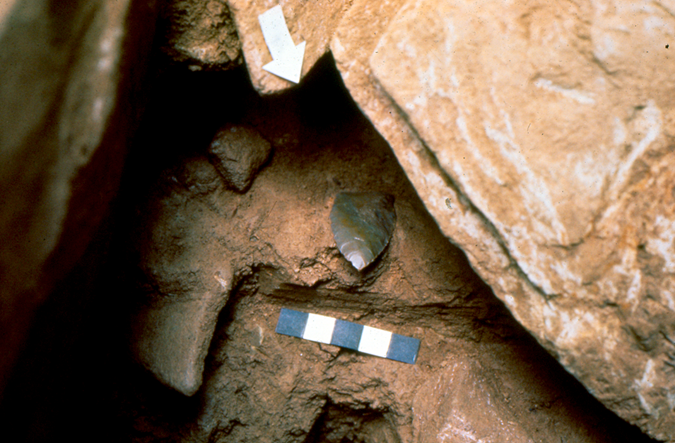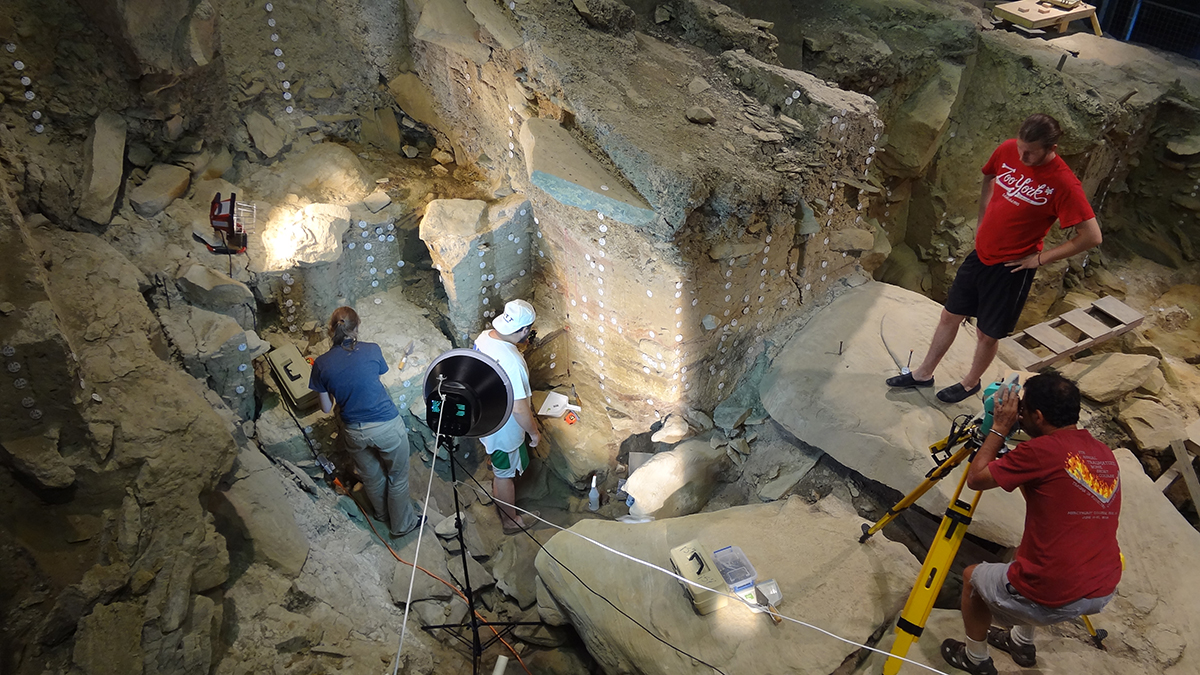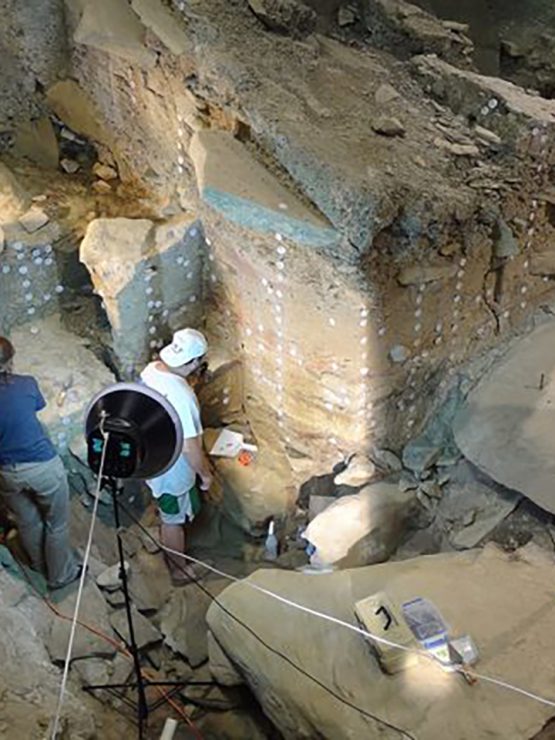This article will also appear in the Fall 2019 issue of Western Pennsylvania History magazine.
The Meadowcroft Rockshelter is a world-renowned archaeological site and a National Historic Landmark. It is an ideal campsite protected by a sandstone ledge high above Cross Creek. Prehistoric people camped there at least 19,000 years ago!
But how do we know that?

Since the 1950s, archaeologists have used radiocarbon dating to understand the age of the sites they are excavating. Anything that was once alive can be directly dated by radiocarbon dating. Non-living things like rocks (think: flint projectile points) or pottery, can only be indirectly dated by association using this method. That is, if an arrowhead is found in the same undisturbed layer with a bone which has been dated to A.D. 1000, the arrowhead is probably of the same age.
All About Carbon
As the name suggests, the radiocarbon dating method makes use of the element carbon, which is among the most abundant elements on earth. In fact, it is the building block of most everything and is essential for life. Carbon naturally exists in three chemically distinct forms known as isotopes. The atoms of all these isotopes have six protons, but they differ in the number of neutrons.
- Carbon-12 makes up almost 99% of all carbon on the earth.1 It contains six protons and six neutrons (6+6=12, therefore it is carbon-12).
- Carbon-13, with its six protons and seven neutrons, makes up only about 1%.1
- Carbon-14, with six protons and eight neutrons, is the rarest isotope making up only one of every trillion carbon atoms on earth.1
Radiocarbon dating relies on the Carbon-14 isotope, which is radioactive. It is not chemically stable, and it will decay over time until it is no longer carbon-14. Eventually it decays enough to lose a proton and become the more stable element nitrogen-14. The reason radiocarbon dating works is because of this instability and decay. The rate at which a radioactive element decays is known as its half-life and for carbon-14, the half-life is 5,730 years.
In other words, it takes that long for half of the carbon-14 present in a sample to decay. After 5,730 more years, the remaining carbon-14 decays by half. This continues until all the carbon-14 in the sample is gone.2

All plants, animals, and people absorb this naturally occurring carbon-14 while they are living and maintain a constant level of it through eating and respiration. This is why non-living things, which don’t eat and breath, cannot be directly dated using this method. Once something dies, it no longer maintains a constant level of carbon-14, and that which is already within the organism begins to decay. The ratio of the remaining carbon-14 to nitrogen-14 in a sample will indicate how long ago the plant, animal, or person died. If the amounts of these two elements are equal, it is 5,730 years old.2
The Challenges
Radiocarbon dating does provide some challenges. First, because of the half-life phenomenon, anything older than about 50,000 years cannot be dated with this method because there is not enough carbon-14 remaining in a sample to analyze.2 Next, radiocarbon dating does not provide a precise date for a sample. There is always a plus/minus factor with the results. For example, a date obtained from firepit charcoal might have a date of A.D. 1000 ± 80 years. In other words, the campfire that produced that charcoal could have been lit as early as A.D. 920 or as late as A.D. 1080.
Lastly, another challenge with this method of dating comes from factors affecting the levels of carbon-14. These factors, which can be corrected in date calculations, include the fact that the amount of carbon-14 in the atmosphere has not remained constant. Because of this, radiocarbon years underestimate calendar years and the further back in time you go, the greater the discrepancy. Also, the testing and use of thermonuclear devices since the mid-twentieth century has increased atmospheric levels of carbon-14, which must be taken into account. Finally, it has been determined that mollusks and certain plants do not absorb carbon-14 at the same rate as other organisms. However, based on other measures of time such as tree ring data and sediment samples from ancient lake beds, calibration curves have been developed to reconcile these differences.2
Radiocarbon vs. Calendar Years
During the early years of the Meadowcroft excavation, the radiocarbon lab at the Smithsonian Institution ran dates on samples from the site. The earliest dates associated with indisputable evidence of a human presence came from samples of charcoal from firepits. This showed prehistoric people were using the Meadowcroft Rockshelter as early as 16,000 radiocarbon years ago. When the calibration curves are applied to convert to calendar years, it establishes a human presence at Meadowcroft 19,000 years ago!
1 https://www.esrl.noaa.gov/gmd/ccgg/isotopes/chemistry.html
2 J.M. Adovasio and Jake Page, “The First Americans: In Pursuit of Archaeology’s Greatest Mystery.” (New York: Random House, 2002.) 112-115.
David Scofield is the director of Meadowcroft Rockshelter and Historic Village.

